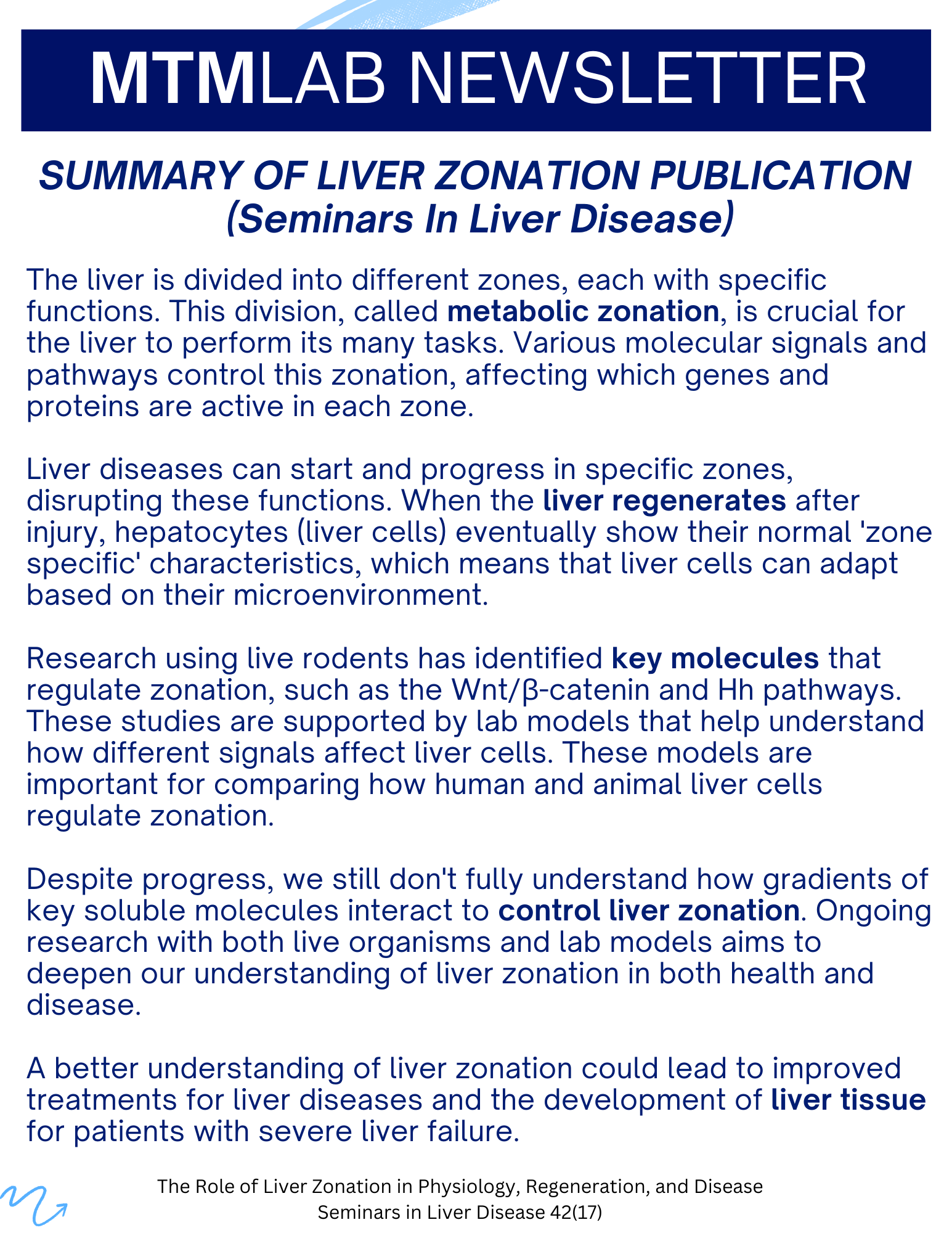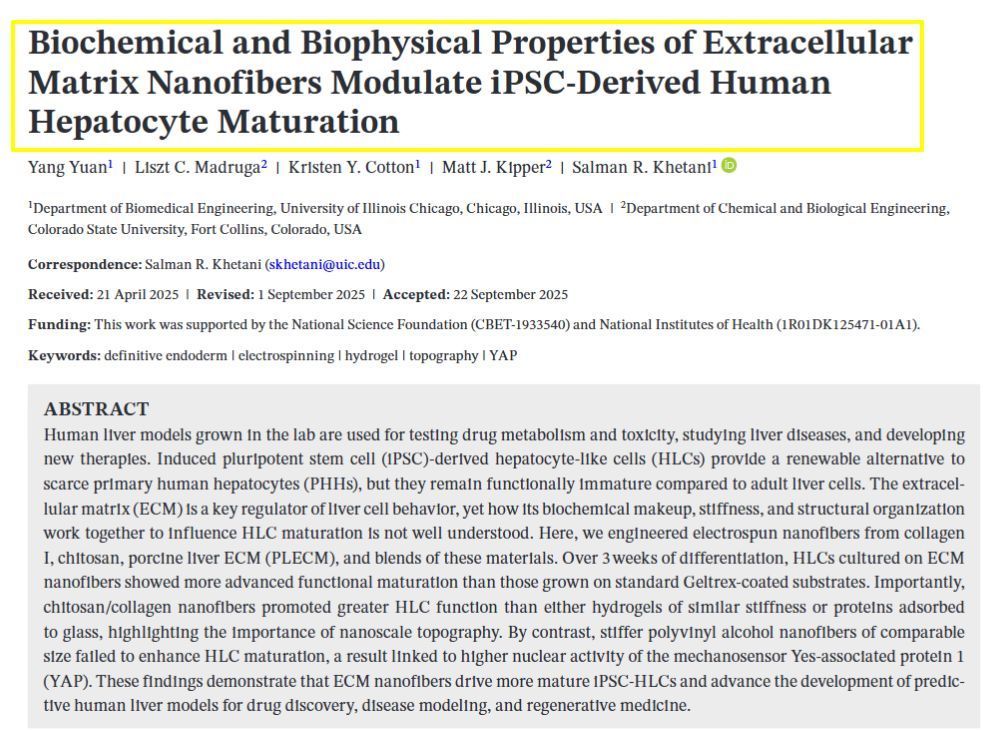Summary of Liver Zonation Publication (Seminars in Liver Disease)

The liver is divided into different zones, each with specific functions. This division, called metabolic zonation, is crucial for the liver to perform its many tasks. Various molecular signals and pathways control this zonation, affecting which genes and proteins are active in each zone.
Liver diseases can start and progress in specific zones, disrupting these functions. When the liver regenerates after injury, hepatocytes (liver cells) eventually show their normal 'zone specific' characteristics, which means that liver cells can adapt based on their microenvironment.
Research using live rodents has identified key molecules that regulate zonation, such as the Wnt/β-catenin and Hh pathways. These studies are supported by lab models that help understand how different signals affect liver cells. These models are important for comparing how human and animal liver cells regulate zonation.
Despite progress, we still don't fully understand how gradients of key soluble molecules interact to control liver zonation. Ongoing research with both live organisms and lab models aims to deepen our understanding of liver zonation in both health and disease.
A better understanding of liver zonation could lead to improved treatments for liver diseases and the development of liver tissue for patients with severe liver failure.
Publication >> https://www.researchgate.net/publication/358376897_The_Role_of_Liver_Zonation_in_Physiology_Regeneration_and_Disease



